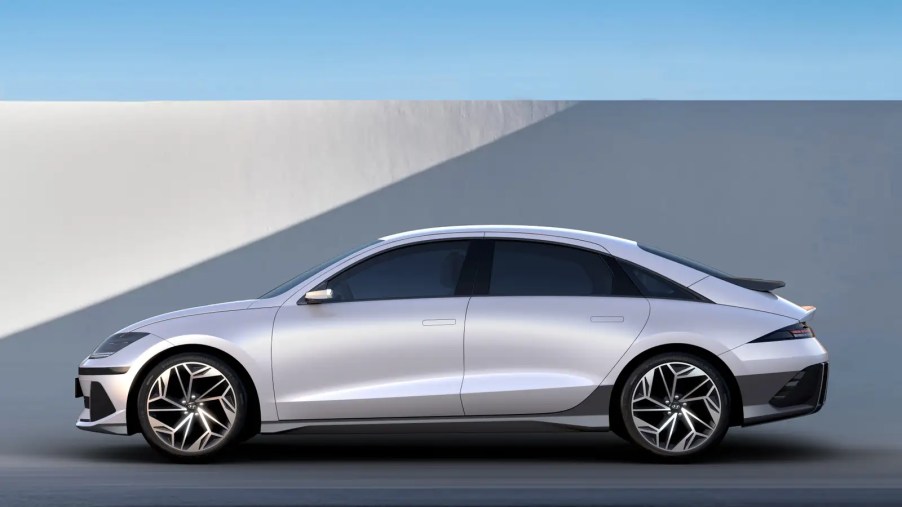
Hyundai Ioniq 6: The Sedan Shape of the Future Explained
The 2023 Hyundai Ioniq 6 EV is being hailed for its dramatic design. It is a departure from the three-box architecture we’ve seen in sedans for 100 years. Or is it? Looking back on aerodynamic studies, and production cars, it turns out this is actually an old design. That’s because managing the air around an EV is more important than ever. So let’s see how far back this design goes.

While the Ioniq 6 is a departure, it isn’t as big of a departure as its black concept which debuted back in February. That’s unfortunate because it presented a radically streamlined sedan that looked like there was some Porsche DNA mixed into it. Still, it is a precursor for what to expect going into the future.
The Ioniq 6 design goes back to the 1930s

But actually, this almost exact design has its origins in the 1930s. The best example, and it was a production vehicle, was the Tatra 77 La Voiture Elegante. Looking at the brochure illustration, you can see for yourself. Its drag coefficient was a mere 0.2455.

Also, variations of the design can be seen in the 1934 Chrysler and DeSoto Airflow sedans, and the radical Tom Tjaarda-designed rear-engine body study of 1933. Ford displayed this car at the 1934 Chicago Century of Progress World’s Fair.

Ferdinand Porsche was another proponent of this shape. His Type 64 car from 1939 was a precursor to

the Volkswagen Beetle and his own 356 design. And the Panhard Dynavia concept, though awkward in some respects, followed the same basic blueprint.
Even Saab did their version of this same Ioniq 6 design in 1950

Even Saab got into the tapering design with its 1950-up sedans. Needless to say, the basic idea for the Ioniq 6 has been tested and approved by some of the best and brightest designers and companies in the 20th century.

Moving to more recent times, the Oldsmobile Aerotech race car from the mid-1980s, designed by the future head of GM Design Ed Welburn, shows a more modern interpretation of this aerodynamic design. So besides the sloping profile, what’s so different about the Ioniq 6 and why does it speak for the future?
The Mercedes EQXX concept looks almost identical to the Ioniq 6

Looking at the Ioniq 6 beltline, you can see that the tail ends much lower than most other sedans. In fact, it ends at a lower point than the sloping front end. A very similar Mercedes-Benz design recently debuted in April. Called EQXX EV, it recently completed a 621-mile trip on a single charge.
It is so close to the production Ioniq 6, we superimposed a slightly stretched image over the EQXX to see how similar. Also notice that the tail ends farther out than we have seen on recent sedans. That’s to allow airflow turbulence to disrupt as little of the body as possible.
It’s about aerodynamics

Since it tapers back to almost no height, the disruption is minimal. You can see that in the side-view wind tunnel image. That disruption pulls on the vehicle. So less disruption allows the vehicle to glide through the atmosphere easier, increasing mileage.
We also have a modern interpretation of that original Tatra 77 design from March of this year. All of this proves that what goes around, comes around. Also, everything new is old.



